International Organization for standardization (ISO) is an independent, non-governmental, international organization that develops standards to ensure the quality, safety, and efficiency of products, services, and systems. The purpose of the ISO 7438 is to design to make products and services better and to make companies, governments and other organizations more efficient , Some of ISO standards are design for specific industries, like the food industry, or design to help improve the environment.
ISO 7438 Test Standard
Description For ISO 7438
ISO 7438 is commonly an international test standard design for determining the ability of metallic materials to undergo plastic deformation in bending. ISO 7438 describes the requirements for bend testing for ductility of metallic materials. Manufacturing industries such as automotive, metal, alloy, building construction and others often use this standard. Nowadays, ISO standards are highly preferred by both corporate or government bodies. In Malaysia, most industries use the ISO 7438 standard in their companies. The Malaysian government has also adopted this standard.
Generally, ISO 7438 measures the behaviour of materials subjected to simple beam loading , This test is known as a bending test or sometimes called flexure testing or transverse testing. Bend tests can be perform on using Universal Testing Machine (UTM). In the manufacturing industry, the ISO 7438 test standard is use to measure the flexural strength of metallic materials. This test provides a visual indication of the ductility of the material. Basically, a bend test is perform on a UTM machine using a 3-point bend fixture. The specimen is bent to a predetermined angle or until the specimen fractures.
Specimens For ISO 7438
Round, square, rectangular or polygonal cross-section test pieces shall be use in the test.
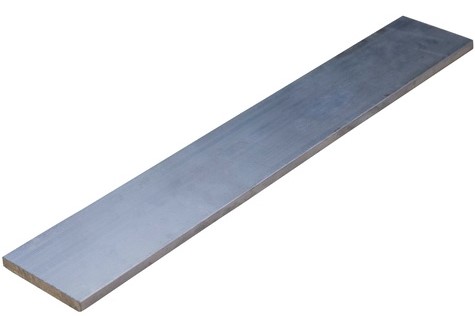
Jigs For ISO 7438
The following are the equipment used in this test:
1. Bending device with two supports and a former
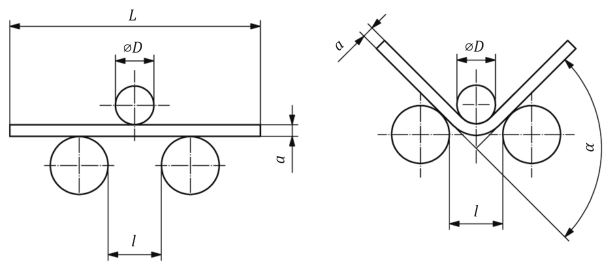
The 3-point bending jig was mount on an electromechanical material testing machine , The 3-point bending jig is an easy-to-use fixture that relies on the test machine to maintain alignment between the top and bottom parts.
2. Bending device with a V-block and a former
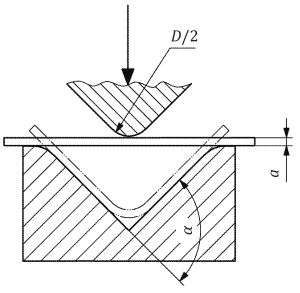
3. Bending device with a clamp
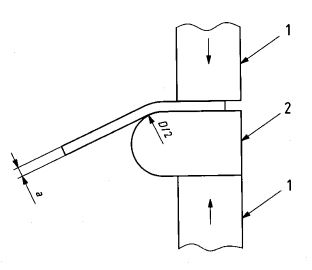
*All the Image source from ISO 7438 test standard*
Extensometers
This test does not require an extensometer because the purpose of this test is not to measure the displacement of elongation.
Type of UTM machine
1. VEW 2308A
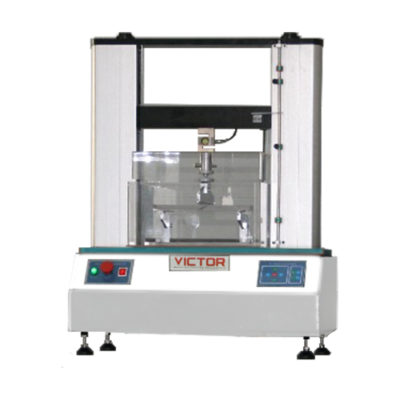
The machine is design by mechanical-electrical integration, the composition of the force-measuring Sensor, transmitter, microprocessor, mechanism of load drive, computer and color inkjet printer. The high-precision electronic motor can be set to five-speed, the components is connect by plug-way, Floor-standing models, it is taken account of modern industrial design and ergonomics in modelling and Coating. It can be tested with all the materials in a stretch, compression, bending, shear, embedded relay, Peeling. tearing, crack, etc, such as rubber, plastics, leather, metal, nylon wire, fabric, paper, aerospace, packaging, construction, petrochemical, electrical, vehicle, etc.
The implementation of standards and standard configuration:
- GB/T4689.20-1996 Measuring fastness of leather’s adhesion
- QB/T2710-2005 Measuring leather’s expansion and the rate of elongation
- QB/T2711-2005 measuring tear force of leather
- QB/T2712-2005 measuring leather’s strength and stretch of spherical crack test
Test Procedure
The specimen is loaded into 3-point support & load application is distribution directly in the central.
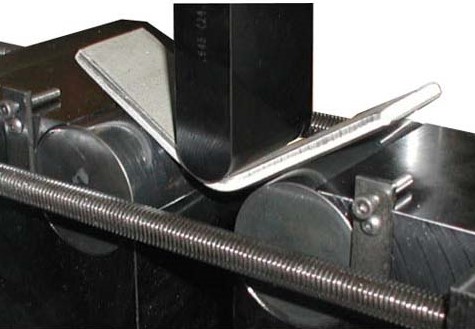
*Image source from http://unitedtest.com/*
3-point bending test using 2 parts jigs. The first part is place on the top and the second part is place on the bottom. For the bottom, it has 2 parallel ‘lower’ anvils to support the specimen. For the top, A single ‘upper’ anvil positioned exactly half-way between the 2 ‘lower’ anvils is use to apply compressive load to the specimen to determine its material characteristics.
